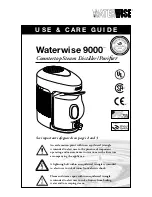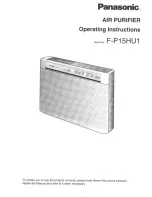
6TQWDNGUJQQVKPI
4 E4
High discharge
temperature protection
of compressor
5
Overcurrent protection
E5
OFF 3S and
blinks 5
times
(inverter
unit);
running
indicator
blinks
(non-inverter
floor
standing
unit); As for
other types
of units,
During cooling and
drying operation,
compressor and
outdoor fan stop while
indoor fan operates.
During heating
operation, all loads
stop.
1. Unstable supply voltage. Normal
fluctuation shall be within 10% of the
rated voltage on the nameplate.
2. Supply voltage is too low and load
is too high.
3. Measure the current of live wire on
main board. If the current isn’t higher
than the overcurrent protection value,
please check the controller.
4. The indoor and outdoor heat
exchangers are too dirty, or the air
inlet and air outlet are blocked.
5. The fan motor is not running.
Abnormal fan speed: fan speed is too
please refer
to the
detailed
function
requirement.
low or the fan doesn’t run
6. The compressor is not running
normally. There is abnormal sound,
oil leakage or the temperature of the
shell is too high, etc.
7. There’s blockage in the system
˄
filth blockage, ice plug, greasy
blockage, Y-valve hasn’t been
opened completely
˅
OFF 3S and
blinks 4 times
(inverter unit
); running
indicator
blinks
(non-inverter
floor standing
unit); As for
other types
of units,
please refer
to the
detailed
function
requirement.
During cooling and
drying operation,
compressor and
outdoor fan stop while
indoor fan operates.
During heating
operation,all loads
stop.
1. Abnormal system (e.g.: blockage,
etc)
2. Abnormal rotation speed of
outdoor motor (cooling )
3. Abnormal air intake (cooling)
4. System is normal, but the
compressor discharge temperature
sensor is abnormal or poorly
contacted.
3 E3
Low pressure
protection of
compressor
OFF 3S and
blinks 3
times
(inverter
unit); running
indicator
blinks
(non-inverter
floor standing
unit); As for
other types
of units,
please refer
to the
detailed
function
requirement.
The complete unit
stops
1. The main board and display
panel are not connected well.
2. The LPP terminal on the main
board is not connected well with the
high pressure switch on the
complete unit.
3. The wiring of the high pressure
switch is loosened. High pressure
switch is damaged or poorly
contacted.
4. Insufficient or leaking out
refrigerant.
5. The LPP input is at high level.















































